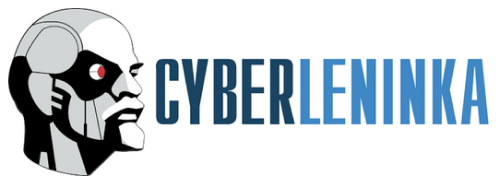About Some Properties of Quasi-hadamard Matrices Defining Bijective Transformations
( Pp. 32-38)
More about authors
Nikonov Vladimir G.
Doctor of Engineering, Professor; member at the Presidium
Russian Academy of Natural Sciences
Moscow, Russian Federation Kononov Sergey A.
Secure Information Technology Assistance Foundation
Moscow, Russian Federation
Russian Academy of Natural Sciences
Moscow, Russian Federation Kononov Sergey A.
Secure Information Technology Assistance Foundation
Moscow, Russian Federation
Abstract:
The article continues studies of bijective mapping determined by quasi-hadamard matrices started in work [8]. It is proved that for different quasi-hadamard martices there are different mappings. All quasi-hadamard matrices of orders 4 and 8 are also described.
How to Cite:
Nikonov V.G., Kononov S.A., (2022), ABOUT SOME PROPERTIES OF QUASI-HADAMARD MATRICES DEFINING BIJECTIVE TRANSFORMATIONS. Computational Nanotechnology, 1 => 32-38.
Reference list:
Belevitch V. Theorem of 2n terminal networks with application to conference telephony // Electrical Communication. 1950. Vol. 26. Pp. 231-244
Goethals J.M., Seidel J.J. Orthogonal matrices with zero diagonal // Canadian Journal of Mathematic. 1967. Vol. 19. Pp. 1001-1010.
Burdelev A.V. Questions of independence threshold equiprobable Boolean functions. Forestry Bulletin. 2009. No. 3. Pp.116-119. (In Rus.)
Burdelev A.V. Simplification of criterion Huffman for monotonous self-dual Boolean functions. Forestry Bulletin. 2010. No. 6. Pp.178-183. (In Rus.)
Glukhov M.M., Elizarov V.P., Nechaev A.A. Algebra. Moscow: Lan, 2015.
Dertouzos М.L. Threshold logic: A synthesis approach. Cambridge, Massachusetts: MIT Press, 1965.
Nikonov V.G., Zobov A.I. About possibility of using fractal models in data security system construction. Computantional Nanotechnology. 2017. No. 1. Pp. 39-48. (In Rus.)
Nikonov V.G., Litvinenko V.S. Geometrical approach to the argumentum of bijection of one coordinate-threshold reflection. Computantional Nanotechnology. 2015. No. 1. Pp. 26-31. (In Rus.)
Nikonov V.G., Litvinenko V.S. About bijectivity of transformations determined by quasi-hadamard matrixes. Computantional Nanotechnology. 2016. No. 1. Pp. 6-13. (In Rus.)
Nikonov V.G, Sidorov Е.С. About the possibility of one-to-one mappings’ representation by the quasi-hadamard matrixes. Forestry Bulletin. 2009. No. 2. Pp. 155-158. (In Rus.)
Goethals J.M., Seidel J.J. Orthogonal matrices with zero diagonal // Canadian Journal of Mathematic. 1967. Vol. 19. Pp. 1001-1010.
Burdelev A.V. Questions of independence threshold equiprobable Boolean functions. Forestry Bulletin. 2009. No. 3. Pp.116-119. (In Rus.)
Burdelev A.V. Simplification of criterion Huffman for monotonous self-dual Boolean functions. Forestry Bulletin. 2010. No. 6. Pp.178-183. (In Rus.)
Glukhov M.M., Elizarov V.P., Nechaev A.A. Algebra. Moscow: Lan, 2015.
Dertouzos М.L. Threshold logic: A synthesis approach. Cambridge, Massachusetts: MIT Press, 1965.
Nikonov V.G., Zobov A.I. About possibility of using fractal models in data security system construction. Computantional Nanotechnology. 2017. No. 1. Pp. 39-48. (In Rus.)
Nikonov V.G., Litvinenko V.S. Geometrical approach to the argumentum of bijection of one coordinate-threshold reflection. Computantional Nanotechnology. 2015. No. 1. Pp. 26-31. (In Rus.)
Nikonov V.G., Litvinenko V.S. About bijectivity of transformations determined by quasi-hadamard matrixes. Computantional Nanotechnology. 2016. No. 1. Pp. 6-13. (In Rus.)
Nikonov V.G, Sidorov Е.С. About the possibility of one-to-one mappings’ representation by the quasi-hadamard matrixes. Forestry Bulletin. 2009. No. 2. Pp. 155-158. (In Rus.)
Keywords:
bijections, threshold functions, quasi-hadamard matrices.
Related Articles

Information Security Pages: 93-105 DOI: 10.33693/2313-223X-2022-9-1-93-105 Issue №20643
On the Existence, Method of Construction and Some Properties of (n - 2)-Structured Matrices Generating Bijective Transformations
bijections
threshold functions
(n - 2)-structured matrices
Show more










